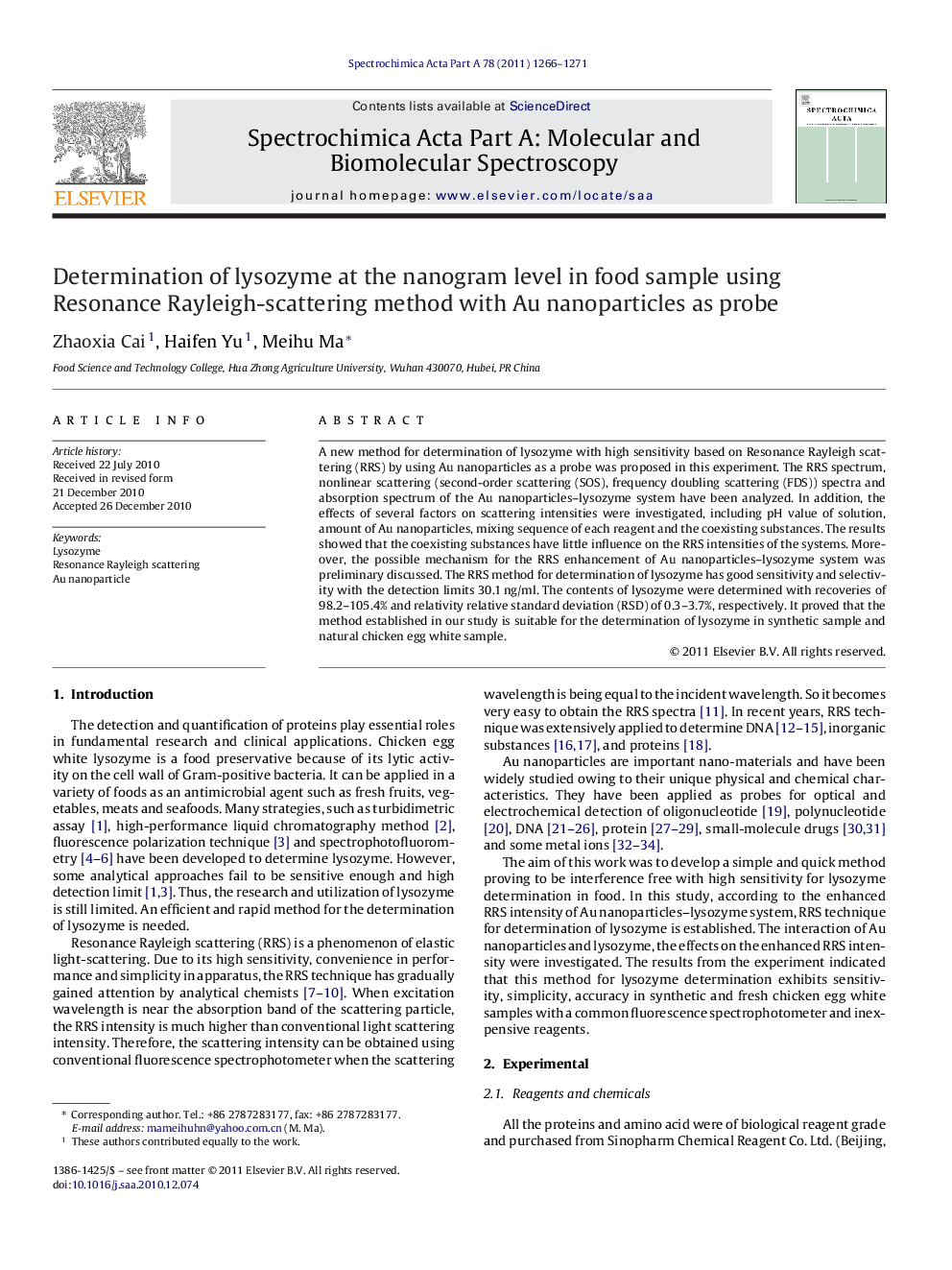| Article ID | Journal | Published Year | Pages | File Type |
|---|---|---|---|---|
| 1231695 | Spectrochimica Acta Part A: Molecular and Biomolecular Spectroscopy | 2011 | 6 Pages |
A new method for determination of lysozyme with high sensitivity based on Resonance Rayleigh scattering (RRS) by using Au nanoparticles as a probe was proposed in this experiment. The RRS spectrum, nonlinear scattering (second-order scattering (SOS), frequency doubling scattering (FDS)) spectra and absorption spectrum of the Au nanoparticles–lysozyme system have been analyzed. In addition, the effects of several factors on scattering intensities were investigated, including pH value of solution, amount of Au nanoparticles, mixing sequence of each reagent and the coexisting substances. The results showed that the coexisting substances have little influence on the RRS intensities of the systems. Moreover, the possible mechanism for the RRS enhancement of Au nanoparticles–lysozyme system was preliminary discussed. The RRS method for determination of lysozyme has good sensitivity and selectivity with the detection limits 30.1 ng/ml. The contents of lysozyme were determined with recoveries of 98.2–105.4% and relativity relative standard deviation (RSD) of 0.3–3.7%, respectively. It proved that the method established in our study is suitable for the determination of lysozyme in synthetic sample and natural chicken egg white sample.
Graphical abstractFigure optionsDownload full-size imageDownload as PowerPoint slideResearch highlights▶ A Resonance Rayleigh scattering (RRS) method for determination of lysozyme with high sensitivity was established. ▶ The possible mechanism for the RRS enhancement of Au nanoparticles–lysozyme system was preliminary discussed. ▶ The coexisting substances have little influence on the RRS intensities of the systems. ▶ The detection limit of lysozyme is reach to nanogram lever.
